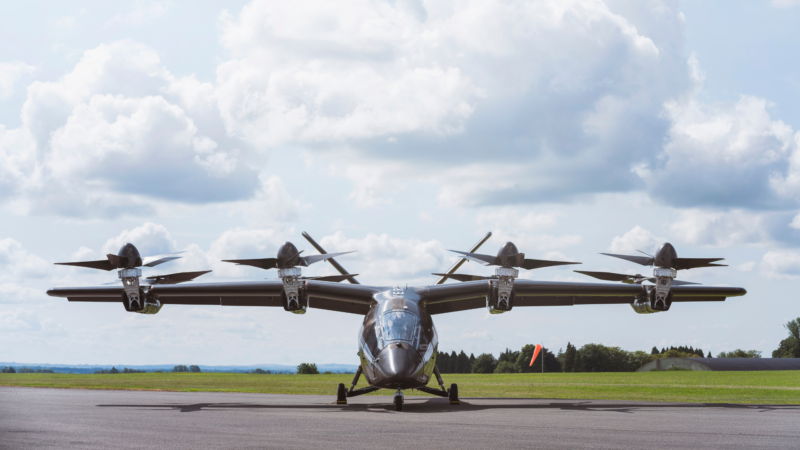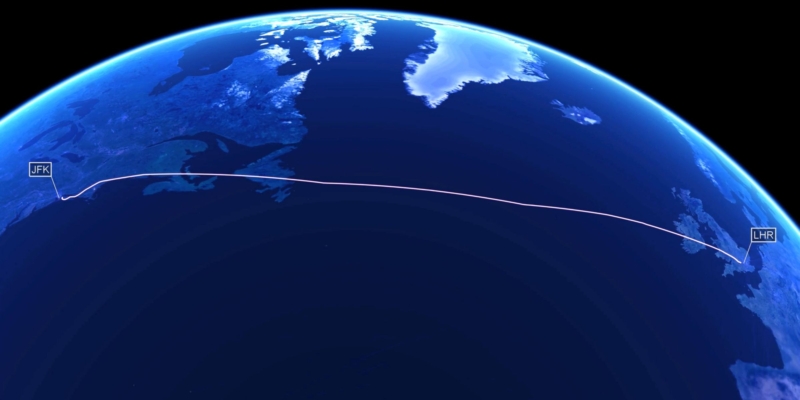Answering your eVTOL future flight questions
7 March 2024At the end of last year, we ran a series of simulations at our head office in Hampshire designed to help us understand how eVTOLs might one day operate at scale within UK airspace.
To do that, we developed a draft new ‘concept of operations’ and some prototype technologies with the aim of supporting the full integration of eVTOLs in our skies alongside conventional air traffic. This was a part of the Advanced Mobility Ecosystem Consortium (AMEC) project, a Future Flight Challenge project part funded by UK Innovation.
We have some similar simulations coming up this week to support Project CAELUS, another Future Flight Challenge project that NATS is a member of. This time we’re focusing on how drones could operate beyond visual line of sight and at scale within controlled and uncontrolled airspace, as well as in and around an international airport. We’ll share more information on that work next week, but I wanted to take the chance to revisit some of the questions that came our way following the AMEC sims.
A big part of this work is about us feeling our way in uncharted territory. That’s the point of running these simulations. We are learning as we go and will take what works and refine what doesn’t. That does mean we won’t have all the answers right now, but I still wanted to take this opportunity to answer some of the points people took the time to raise. I hope this is useful and I equally hope NATS has the chance to work with many of you on this incredibly exciting, emerging part of our industry.
Your questions answered
Was the flight conducted entirely within Controlled Airspace?
This was an IFR flight conducted in controlled and uncontrolled airspace.
If not, how did you simulate deconfliction from GA Aircraft
As a standard IFR flight with a pilot onboard, it was see and avoid supplemented by lower airspace radar service whilst in uncontrolled airspace.
Once the eVTOL entered the Heathrow control zone, did they stick to the current route structure or was it straight line routeing?
Once at the London Control Zone boundary, the eVTOL it was given IFR routings deconflicted from other aircraft under ATC control.
Well done deconflicting from the Police Helicopter, how would you propose deconflicting from the other Helicopter traffic within the control zone?
In the future, we believe this will be a mixture of standard air traffic control practises and strategic ‘4D trajectory’ [link] deconfliction.
I am interested in understanding how such flights are deconflicted prior to departure?
The simulations were based on a future concept where all flight trajectories are known and incorporated into the business as usual schedule, cognisant of the eVTOL performance, weather and potential capacity of vertiports.
How did the simulations differ from helicopter or fixed wing journeys between airports? I believe the vision of eVTOL aircraft was to introduce “urban air mobility”, creating new, more accessible hubs for transportation
This sim was to prove the concept of operating from a regional location into the UK’s most complex airspace. The vertiports being collocated with major airports is the most challenging use case from an airspace management perspective. The consortium partners, which include Bristol and London City airports, have helped to prove the concept, but we could have conducted the sim at vertiports in similar geographical locations.
How would the eVTOL avoid general aviation traffic?
The eVTOL in the simulation was piloted by a fully qualified commercial pilot flying in accordance with the Rules of the Air. The aircraft operated as per existing IFR aircraft on similar routings in Class G airspace. It would transmit its position on Mode S and ADS-B and other suitably equipped aircraft can see it electronically beyond line of sight. In addition to see and avoid, it would also receive electronic conspicuity information from ADS- B equipped aircraft that would be displayed to the pilot.
I’m guessing the silence from NATS means they haven’t considered it, in the same way they never discussed it with any airspace users, both inside and outside of CAS, to get opinions and add some realism to the trial.
The AMEC project team is made up of people from a wide range of backgrounds including:
- Air Traffic Controllers with experience of provision of Flight Information Services and Radar Control Services; and
- Commercial Pilots with wide body aircraft, fast jet, warbird, tilt rotor and helicopter experience; and
- GA Pilots with experience of gliders, microlights and light aircraft.
But of course this is not the end of the story, and a huge amount of work still needs to be done. I would fully expect the CAA to seek out the views of the entire aviation community when deciding the final form of any future eVTOL or drone regulations.
Comments
Please respect our commenting policy and guidelines when posting on this website.


